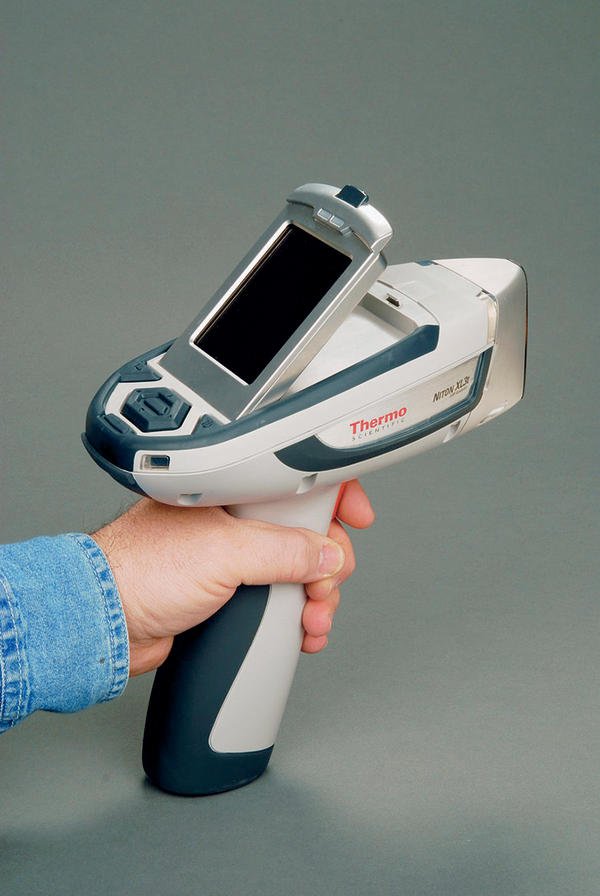The Niton XL3 700 Series from Thermo Fisher Scientific reportedly provides a very fast solder alloy grade identification and laboratory-quality composition analysis of plastics and polymers performed with a handheld XRF analyzer: Typical time for routine solder screening measurements is less than 5 seconds – as much as 2 ½ times faster than the company’s previous generation instruments, increasing instrument throughput and user productivity.
“The Niton XL3t features a 50 kilovolt, 2-watt x-ray tube, the highest power x-ray tube ever offered in a handheld XRF analyzer, as well as advanced electronics which enable a host of new features directly benefiting the customer,” said Jon Shein, director of global marketing, Thermo Scientific Niton Analyzers. In today’s complex regulatory environment, these instruments give component manufacturers, distributors, OEMs, recyclers and others the fast, accurate, easy to use analytical tools they need to test parts and finished goods for compliance with RoHS, China ROHS, WEEE and other regulations.
The analyzers are available in a range of configurations and with an assortment of optional features and accessories to suit a wide variety of analytical needs from quick screening to rapid simultaneous measurement of up to 25 elements (including lead, cadmium, mercury, chromium, bromine and chlorine) in a sample. The handheld XRF analyzers offers many benefits including:
Component testing: Higher speed and lower element detection limits enable users to screen incoming components faster. The 50 kV x-ray tube, improved source filtering and advanced analog and digital electronics produce more precise and accurate measurements of every measured element – particularly cadmium, which must be accurately measured at low concentrations for RoHS-WEEE compliance.
Solder analysis: Testing speed and low element detection limits enable users to closely monitor concentrations of lead, copper and other elements in solder, speeding up electronics manufacturing and minimizing the need to send solder samples to laboratories for destructive testing.
Populated PCBs and finished goods: XRF analyzers with optional small spot analysis hardware let users select either 8 mm diameter or 3 mm diameter analysis spot size for each measurement. This allows users to screen larger areas of printed circuit boards and other heterogeneous samples quickly; but when smaller components need to be analyzed in isolation, users can switch in seconds to measure a 3 mm diameter spot on the sample. An optional built-in color camera lets users pinpoint areas of interest and store sample images with their XRF analytical results for recordkeeping and documentation.
Hi-Rel Screening: Many aerospace, nuclear power industry and medical device manufacturers cannot use lead-free components and solders containing high concentrations of pure tin, zinc or silver which degrade under some conditions due to filamentary corrosion, commonly known as “tin whiskering”. XRF analyzers provide these manufacturers with fast, accurate and cost effective screening of solders, fasteners and other components to make sure they contain the lead concentrations specified for the longterm reliability of their products.
XRF analyzers use 80 MHz Asics digital signal processors and embedded processors for computation, data storage, communications and other functions. They feature 50 kV, 2 watt miniaturized x-ray tubes and multiple primary filters to provide optimized excitation for elements ranging from chlorine through the transuranic elements. The series can also be equipped with optional small-spot sample analysis allowing users to switch between 8 mm diameter and 3 mm diameter sample measurement areas. Instruments from this series offer a fully-integrated, environmentally-sealed adjustable position color touch-screen displays for easy viewing in all lighting conditions. These instruments use third-generation lithium-ion battery packs.
The series comes standard with the Data Transfer (NDT) Software, a suite of data management utilities that allows users to produce certificates and reports, operate their analyzer remotely from a PC or PDA, and other capabilities. The NDT file format saves and protects the data from each sample analysis, ensuring that data integrity is not compromised.
EPP Europe 452
Share:










